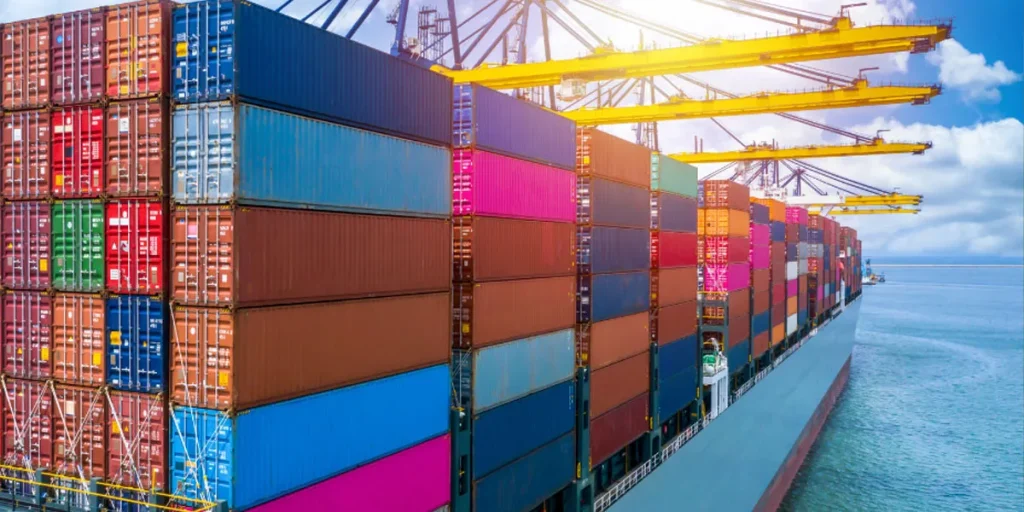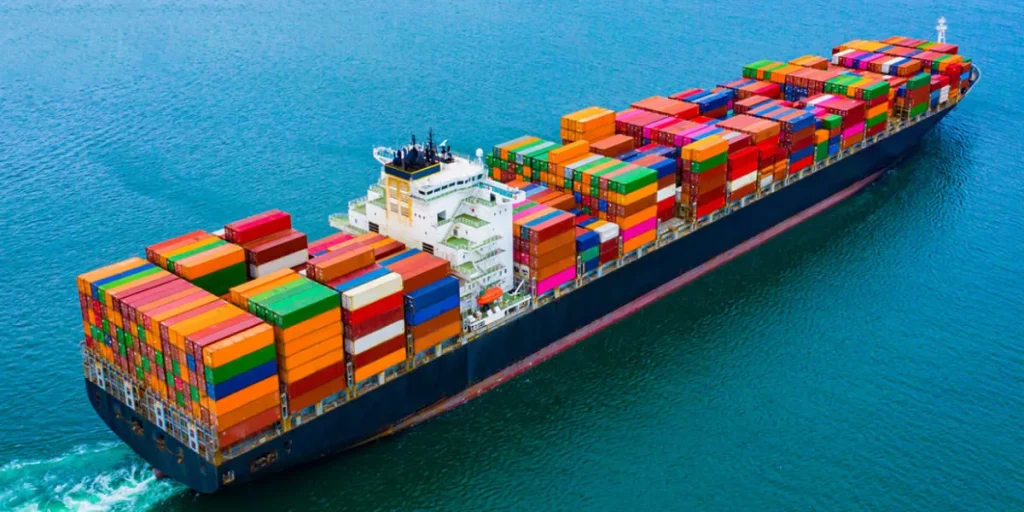An empty 20-foot shipping container weighs approximately 5,000 pounds (2.5 tons), while a 40-foot container typically weighs double that at around 10,000 pounds (5 tons).
A shipping container’s weight plays a crucial role in logistics, influencing transportation costs and infrastructure requirements.
These steel boxes, standardized for global trade, must endure rough handling and extreme conditions while protecting their contents.
Understanding their weight is vital for planning transport via truck, train, or ship, and ensures safety and compliance with road regulations.
Manufacturers design containers to be strong yet as light as possible, balancing durability with economic efficiency in shipping.
As pivotal elements of international trade, their robust construction allows for stacking, leading to optimized space usage in cargo ships and storage areas.

Weight Of Metal Boxes
The Weight of Metal Boxes: a fundamental question when dealing with logistics, transport, or simply understanding the engineering behind these giant containers.
Shipping containers travel across the globe, carrying goods from every industry. Knowing their weight is crucial for safe handling and transport.
Standard Materials And Construction
Shipping containers are feats of engineering designed to endure heavy loads and harsh conditions. They consist mostly of steel, with corrugated walls for added strength.
Containers come with wooden floors, often made from plywood. Their standard design includes rigid, closed corners and a frame that can handle stacking and lifting.
These features shape their durability and influence their base weight.
Empty Versus Laden Mass
The weight of a shipping container can significantly change based on its contents.
An empty container, also called the tare weight, typically weighs about 2,200 to 4,500 kg (4,850 to 9,920 lbs). This weight can vary with size and materials.
When full, or laden, the mass increases dramatically. A container’s maximum gross weight can approach 30,000 kg (66,138 lbs), which includes the container’s own weight plus its cargo.
Knowing these limits is vital for transportation and safety regulations.
| Type of Container | Empty Weight (kg) | Max Gross Weight (kg) |
|---|---|---|
| 20-foot | 2,300 | 24,000 |
| 40-foot | 3,750 | 30,480 |
Note: Weight capacity varies by container type and manufacturer. It’s always necessary to verify with the specific provider.
- Standard 20-foot container: typically between 2,200-2,300 kg empty.
- 40-foot variants: average about 3,750 kg when empty.
- Specialized containers, such as refrigerated units, may weigh more.
Sizing Up Containers

Before we dive into how heavy a shipping container is, let’s understand their sizes. Containers vary in size and, by extension, weight.
Knowing the specific dimensions and weight is vital for transport and handling.
Teu: The Universal Shipping Unit
The term TEU stands for Twenty-foot Equivalent Unit. This is a standard size for containers used globally.
One TEU represents the dimensions of a 20-foot long container. It’s like a universal language for the shipping industry.
When containers double the length, they are referred to as Two TEUs, or a forty-foot equivalent.
Dimensions And Corresponding Weights
Different containers boast various sizes and weights. Let’s look at the common types.
| Type | Length | Width | Height | Empty Weight | Max Cargo Weight |
|---|---|---|---|---|---|
| 20′ Standard | 20 ft | 8 ft | 8.5 ft | ~2,300 kg | ~28,200 kg |
| 40′ Standard | 40 ft | 8 ft | 8.5 ft | ~3,800 kg | ~26,700 kg |
| 40′ High Cube | 40 ft | 8 ft | 9.5 ft | ~3,900 kg | ~26,600 kg |
Note that weight can vary by manufacturer and material. These figures provide a general guide.
- A standard 20-foot container, an empty one, weighs about 2,300 kg.
- A 40-foot container typically weighs around 3,800 kg when empty.
- High Cube containers, offering extra height, have similar weights to standard ones.
Remember, both the weight of the container and the weight of its contents play a crucial role during shipping.
Packing Heft
Understanding a shipping container’s weight is vital for safe and efficient transportation. The ‘Packing Heft’ plays a crucial role.
It accounts for the tare weight and the load it carries. Here’s a deep dive into what makes up a container’s total weight.
Maximum Gross Weights
Shipping containers come with a maximum weight limit. This is the most weight you can pack. It keeps the container safe to move. Different container sizes have different limits.
- 20-foot container: Up to 24,000 kg
- 40-foot container: Up to 30,480 kg
Common Cargo And Weight Implications
Shipments vary in size and weight. Heavy items like machinery can quickly add up. Light items like clothes take up space without much weight.
Balance is key. Here’s how common cargo types impact weight:
| Cargo Type | Weight Range |
|---|---|
| Consumer Goods | Up to 21,000 kg |
| Electronics | 5,000 to 18,000 kg |
| Automotive Parts | 10,000 to 15,000 kg |
| Heavy Machinery | 15,000 to 30,000 kg |
Plan your container’s load wisely. Knowing the maximum and balancing according to cargo type ensures safety and compliance during shipping.
Logistical Impacts

Understanding the weight of shipping containers is crucial in the logistics industry. Not only does it affect transport, but it plays a significant role in planning and costs.
Let’s dive into the logistical impacts of a shipping container’s weight and how it influences the transportation process.
Transportation Challenges
Heavy containers present unique hurdles during transport. Road weight limitations demand careful planning.
- Concrete roads have weight caps.
- Strong bridges can carry heavy loads.
- Axle weight limits protect infrastructure.
Special permits may be necessary for heavy loads. Container weight impacts vehicle choice too.
| Vehicle Type | Max Weight Limit (including container) |
|---|---|
| Semi-trailer Truck | 80,000 lbs |
| Rail Freight | 100,000 lbs and higher |
Considerations For Shipping Overweight Containers
Shipping extra-heavy containers demands more scrutiny.
- Verify local and international weight limits.
- Ensure the container’s cargo is evenly distributed.
- Seek out specialized equipment or services if necessary.
Extra fees might apply for overweight containers. Proper documentation is a must to avoid delays.
Container Weight Regulations
The importance of adhering to ‘Container Weight Regulations’ cannot be overstated. Containers traverse the globe, and incorrect weight declaration can cause safety concerns.
Such regulations ensure smooth, safe shipping operations. Here’s what you need to know about the protocols and verification processes involved.
International Safety Protocols
International guidelines dictate strict safety protocols for shipping containers. Under these rules, shippers must declare the Verified Gross Mass (VGM) of containers.
This prevents overloading, thereby avoiding accidents.
- International Maritime Organization (IMO) sets these global standards.
- All countries follow the Safety of Life at Sea (SOLAS) Convention.
- Containers must be weighed at a certified weighbridge or using certified equipment.
Container Weight Verification
Accurate container weight verification is vital for cargo ships’ stability and safety. Shippers must employ approved methods to determine container weight.
- Weigh the container after it is packed.
- Sum the weight of cargo, container tare, and all additional materials inside.
Failure to comply with these regulations may result in fines, delays, or worse, accidents. Sticking to the weight rules keeps everyone safe and goods moving efficiently.
FAQs About the Weight of a Shipping Container
What Is The Weight Of A Standard Shipping Container?
A standard 20-foot shipping container typically weighs about 5,000 pounds (2,300 kg) when empty. This is known as its tare weight.
Can Shipping Containers Carry Heavy Loads?
Yes, shipping containers are designed to carry heavy loads. A 20-foot container can generally hold up to 55,000 pounds (25,000 kg), whereas a 40-foot container can carry up to 67,200 pounds (30,480 kg).
How Does Container Weight Affect Transportation?
Container weight directly impacts transportation cost and logistics. Heavier containers require more fuel to transport and may be subject to regulatory weight limits on roads and railways.
What Is The Maximum Payload For A 40ft Container?
The maximum payload for a 40-foot container, which refers to its cargo-carrying capacity, is around 59,200 pounds (26,850 kg), minus the tare weight of the container itself.
Conclusion
Understanding the weight of shipping containers is crucial for logistics planning. It ensures safe and efficient transportation.
Remember, standard empty containers weigh about 2 to 2. 4 tons, with filled weights varying based on contents.
Always check specific container specs for exact numbers and plan accordingly for your shipping needs.
Resources:
https://doa.az.gov/about-us/surplus-property/shipping-containers-purchase
https://oceanservice.noaa.gov/economy/shipping.html
